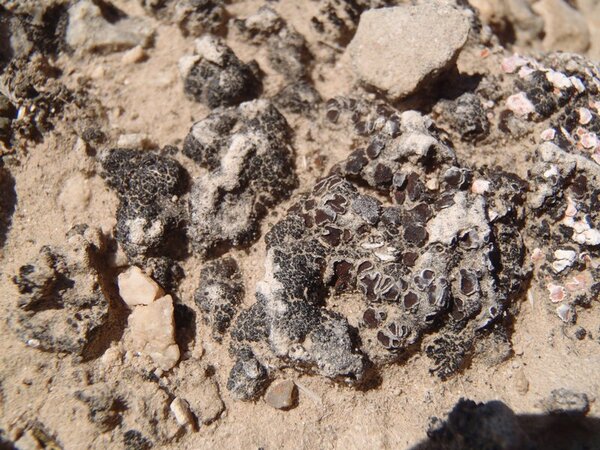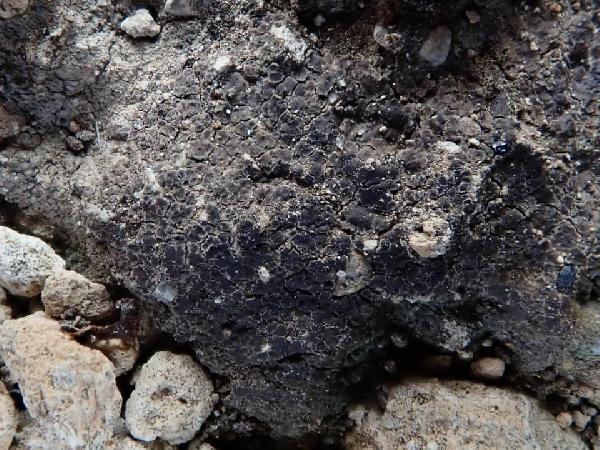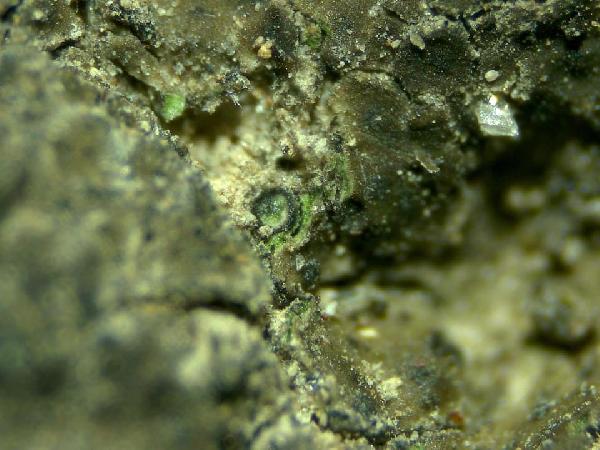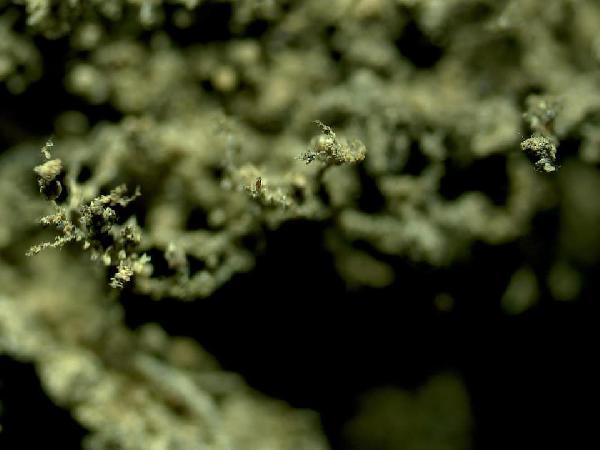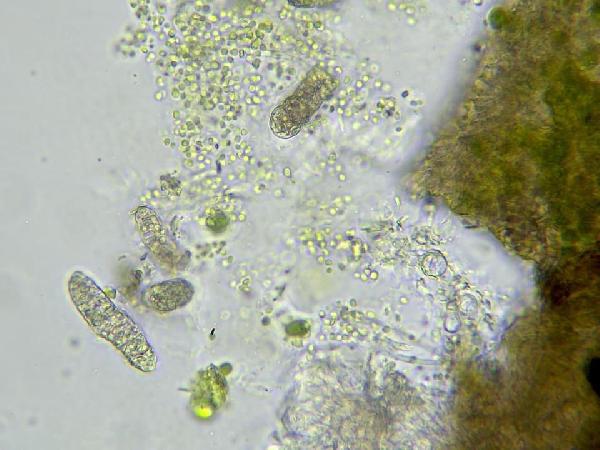Endocarpon loscosii Müll. Arg.
Flora (Regensburg), 55: 503, 1872.
Synonyms:
Distribution:
Description: Thallus squamulose, heteromerous, usually monophyllous, olivaceous brown, grey-brown to rarely dark brown in sun-forms. Squamules 1-2 mm wide, up to 0.4 mm thick, solitary to contiguous but hardly overlapping, adnate, slightly concave to flat, shallowly to deeply incised, sometimes with slightly upturned, paler margins, the lower surface pale to darkening, attached by a mat of colourless, 3-4.5 µm thick rhizohyphae and a few, slender, whitish or pale grey-brown, up to 3 mm long rhizines. Upper cortex pseudoparenchymatous, of anticlinally arranged hyphae, 30-50 µm thick, the cells arranged in vertical columns; epinecral layer usually present, up to 30 µm high; medulla white, of interwoven hyphae; lower cortex absent. Perithecia black, broadly pyriform to subglobose, up to 0.45 mm broad, without involucrellum. Exciple black throughout, 20-30 µm thick; hymenium colourless, I+ red, K/I+ blue, filled with subglobose to ellipsoid, 3-5 µm wide/long hymenial algae; periphyses 25-40 µm long, paraphyses absent. Asci 2-spored, oblong-clavate, bitunicate, with a fissitunicate dehiscence, thin-walled, the wall non-amyloid. Ascospores muriform, pale to dark brown, ellipsoid, (13-)25-43(-54) x 13-21(-25) µm. Pycnidia rare, immersed, black. Conidia crescent-shaped, hyaline, c. 5 x 1 µm. Photobiont chlorococcoid (Diplosphaera), present in both thallus and hymenium. Spot tests: cortex and medulla K-, C-, KC-, P-, UV-. Chemistry: without lichen substances.
Note: on clay to sandy soil in dry habitats; based on a type from Spain and also known from North America, this species has a southern distribution in Europe, with a single record from an inner dry valley of the Western Alps, outside Italy; to be looked for in Italy.
Growth form: Squamulose
Substrata: soil, terricolous mosses, and plant debris
Photobiont: green algae other than Trentepohlia
Reproductive strategy: mainly sexual
Commonnes-rarity: (info)
Alpine belt: absent
Subalpine belt: absent
Oromediterranean belt: absent
Montane belt: absent
Submediterranean belt: extremely rare
Padanian area: absent
Humid submediterranean belt: extremely rare
Humid mediterranean belt: extremely rare
Dry mediterranean belt: extremely rare

Predictive model
Growth form: Squamulose
Substrata: soil, terricolous mosses, and plant debris
Photobiont: green algae other than Trentepohlia
Reproductive strategy: mainly sexual
Commonnes-rarity: (info)
Alpine belt: absent
Subalpine belt: absent
Oromediterranean belt: absent
Montane belt: absent
Submediterranean belt: extremely rare
Padanian area: absent
Humid submediterranean belt: extremely rare
Humid mediterranean belt: extremely rare
Dry mediterranean belt: extremely rare

Predictive model
 INDEX FUNGORUM
INDEX FUNGORUM
 GBIF
GBIF

